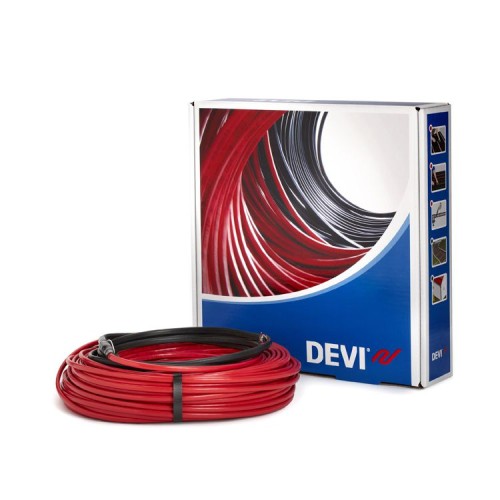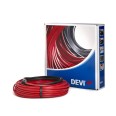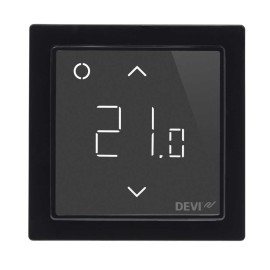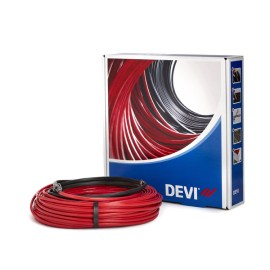The method of heating your property is vital, whether that’s your home or commercial property. The best heating solutions will keep you warm, significantly reduce your electricity bills and lower your environmental footprint, so it’s important to choose wisely.There are dozens of types of heating solutions to choose from and sometimes it can be overwhelming. If you’re looking for a new heating system or are considering making a switch to a different system entirely, it’s always the best idea to evaluate the various options on the market.Gas heating systems are generally the most common heating method in England, Wales and Scotland. However, over four million homes across the UK are off the main gas grid. Blocks of flats and units make up a great deal of them, and they’re often looking for alternatives to gas central heating.Luckily, there are a variety of heating choices available that both commercial enterprises and residential properties can take advantage of, whether they’re on or off the gas grid. Below, we’ve outlined a beginner’s guide to the different heating solutions on the market.We’ve structured this guide as follows:Central Heating: An IntroductionWhat is Central Heating?Types of Central Heating SystemsGas Central HeatingElectric Central HeatingOil Central HeatingLPG Central Heating5 Main Types of Heating SolutionsElectric BoilersUnderfloor Heating SystemsCeiling HeatersWall HeatersStorage HeatersSo, what is the best heating solution for my property?Central Heating: An IntroductionBefore we get into the nitty-gritty and the different types of heating solutions, the first thing you should determine is whether you require a central heating system or something more localised. It is important to know the difference so that you can select a heating system most appropriate to your property.What is Central Heating?Central heating is a system designed to distribute warmth throughout a building. It typically does this by creating heat at a certain point in the property and spreading it throughout the rest of the building usually through water, steam or air. Many systems also distribute hot water across the property.This means that one central heater is installed at a certain part of the property, such as in a garage or a wardrobe. When it is switched on, it proceeds to distribute heat through ducts.You can usually mix central heating with different systems in order to manage the entire climate of the building. This is done through the operation of HVAC (Heating, Ventilation, and Air Conditioning) systems.Central heating is different from localised heating, which refers to only heating one particular spot in your property (such as a living room or one room in your office).Types of Central Heating SystemsBelow, we’ll outline the types of central heating systems you need to know about.Gas Central HeatingIf your property is connected to the natural gas grid, then a gas central heating system is likely going to be the most viable system to choose.Your central heating would normally be powered by gas ducted heaters or a gas-fired boiler, which provides heat for your entire home. You would have a boiler that would burn methane gas extracted from the gas mains.You will sometimes hear gas heat systems referred to as wet systems, which will typically heat up your water using radiators or underfloor heating.Pros of gas central heating – Gas is incredibly efficient, and you’ll often get a good return on the money you put in of ever energy unit you use. Storage costs are minimal, when compared to LPG and oil (outlined below).Cons of gas central heating – Many properties are not on the grid, meaning gas is often not often a choice. While you can get a good return on your investment, it is still expensive given the UK have a limited amount to go around. It is also a fossil fuel and contributes harmful carbon to the environment.Electric Central HeatingIf you’re not on the gas grid (like a huge number of properties in the UK), you could consider a number of electric heating solutions. Nearly every home has access to an electricity grid, so this is one of the more popular alternatives to gas central heating.There are many different types of electric heaters available on the market, but one of our favourites is storage heaters – this is one of the most cost-effective heating solutions which you can use to distribute warmth at night.While they are a little expensive, they can help you reduce your energy bill, especially during winter. Think of having a boiler that is a kettle, except it heats much more than just a cup of tea.Pros of electric central heating – Electric heating systems are much easier (and, therefore cheaper) to install than regular gas heat systems. It also requires less maintenance, doesn’t need an annual service and is widely available across the UK.Cons of electric central heating – Unfortunately, electricity is about 3 to 4 times more expensive than gas. Electricity is generated in gas-powered stations. Gas prices are going up – which means so is electricity.Oil Central HeatingOil central heating also relies on boiler systems, which is an excellent solution if you are not connected to the main gas grid. Boiler systems you can purchase today are highly efficient devices, but you should know that there are different types of oil you can purchase.Oil type C2 is probably the most affordable kind of oil on the market because it just uses kerosene.Kerosene is the most common kind of fuel used across UK properties. It also doesn’t ‘gel’ as much as other types of oil (in other words, crystals are less likely to form to prevent the oil from flowing – which can happen in the colder months)Oil type D is a more expensive oil, and is more commonly seen in commercial premises or large properties.Pros of oil central heating – oil is incredibly efficient, and a great alternative to both gas and electric heating systems if you don’t have access to those grids. Heating oil will also burn faster and doesn’t generate as much carbon as your traditional gas system.Cons of oil central heating – it’s more expensive than natural gas. There’s also no central infrastructure in place to facilitate an oil system, so you’ll need your own independent storage tank. Oil boilers may also be slower at creating warmth than a gas boiler.LPG Central HeatingLiquid petroleum gas (LPG) works similarly to gas heating but is highly effective if you can’t get a gas heat system. A big difference, however, is that LPG is delivered straight to your door (rather than brought in from pipes under the water).Liquid petroleum gas (LPG) heating is produced by a propane or butane boiler. These boilers will heat your water and spread warmth throughout your property through underfloor heating and radiators.Pros of LPG central heating – it’s highly efficient, and also you’ll get a great return on each unit of energy that your heating system uses.Cons of LPG central heating – LPG is costly, and that cost has escalated recently. Because LPG is delivered to you, the usual risk of something going wrong in transit exists – bad weather, traffic delays and theft. 5 Main Types of Heating SolutionsWhether you have a central heating system or a more localised heater, there is no singular way to have a heating system installed throughout your home.There are different ways to set one up. Below, we’ll outline the 5 heating solutions that we think are some of the most effective.Electric BoilersElectric boilers work with running water being heated by electricity. Once the water is heated, it passes through the remainder of your property’s heating system and can warm your home, office or industrial complex with the temperature you choose.Overall, these boilers are excellent for both central heating and localised heating solutions.Types of electric boilersThere are different types of electric boilers that you’ll come across on the market, such as:Combi boilers – combi (short for ‘combination’) boilers are arguably the most popular boiler in the whole of the UK. This is probably because they are extremely economical, and only heat the water that you actually use (and not just all of your water generally).Regular boilers – also known as a ‘heat-only’ or conventional boiler, the regular boiler will send hot water to your radiators and your hot water cylinder (even if you don’t actually end up using that water).System boilers – these boilers are similar to conventional boilers, but they take up less space.Which one you pick depends on your property, your budget and your heating goals, but no doubt the potential for an excellent electric heating solution lies with one of these boilers.Underfloor Heating SystemsUnderfloor heating systems are (obviously) designed to heat your property from underneath the floors. As hot air rises, warmth is then spread throughout the property evenly.This type of heating system is especially effective in places like:bathrooms;rooms with a lot of foot traffic;rooms with cold floors; androoms with high ceilings.Underfloor heaters can be easily installed underneath most materials, especially laminate, concrete and wooden floors. They can also either come as self-adhesive mesh, heating mats or heating cables.Buy Underfloor Heating Mats at SparksTypes of Underfloor HeatersThere are two types of underfloor heating systems you should know about, before making your decision to purchase one.Electric is the most common, and involves heating your floors with a mat, mesh or electric cable.Hydronic involves installing heating pipes in your home and heating the floors with hot water. These tend to be much more expensive than electric underfloor heating systems.What floor coverings are suitable for underfloor heating?Below, we’ll outline the different underfloor heating systems for different floor materials.TimberWooden floors are certainly suitable for a heating system to distribute warmth. However, it’s vital (before you install any wooden underfloor heating system) that the humidity of your timber does not drop to the point where the floor begins to shrink or wrap. You’ll generally want to make sure the temperature does not go any higher than 27°C (unless another temperature is specified by your manufacturer).ConcreteConcrete has a high level of thermal mass (i.e. the ability to store heat). Therefore, a concrete underfloor heating solution is highly effective because the floor itself will capture and retain the heat. This will make sure your flooring and your property stay warm for a long time after your heating is turned off.LaminateLaminate is made up of multiple layers of wood that run in opposite directions. Unlike traditional hardwood timber, it is more stable. This means it can tolerate the various changes in your heating system. However, it is generally recommended not to turn up any laminate heating to over 27°C (unless the manufacturer has stated otherwise).Ceiling HeatersCeiling heaters are, as the name suggests, heaters installed in the ceiling of your property. They are ideal to install in retail outlets, shops, offices, conference rooms and other areas or places where multiple people get together on a regular basis.Unlike underfloor heating, the main benefit of a ceiling heater is that it can distribute warmth without any obstacles in the way. It won’t be blocked by furniture or thick carpets.If your ceiling is between 2.5 and 3.5 metres – you can use low-temperature ceiling heating, generally anywhere between 26°C and 38°C.If your ceiling is higher than 3.5 metres – then you’ll need a higher flow of temperature. We’d recommend both wall heating (discussed below) and ceiling heating.Buy Ceiling Heaters at SparksWall HeatersWall heaters are the ideal solution if you’re looking for a more localised (as opposed to central) heating solution – in other words, they’ll heat up a concentrated area rather than the entire property. The heaters can heat up fairly quickly, providing the immediately desired heat.Wall heaters are quick and simple to install. All you’ll need to do is plug them into a powerpoint, angle it correctly and away you go. There’s generally no need for any expert consultation, although a professional can help you find the best spot to ensure the unit operates at its optimum capacity.Wall heaters have much cheaper costs upfront, as opposed to an underflooring system.At Sparks Direct, we have an impressive range of wall heaters and patio heaters, if you’re looking to heat up an outdoor seating area.Storage HeatersStorage heaters are designed to store heat during the day so that they can warm your property during the night. The main benefit is that it can reduce your electricity costs significantly, especially in winter.They are a little more expensive compared to other hearing solutions, but they’re a great investment if you need to use electricity in off-peak times.Buy Storage Heaters at SparksSo, what is the best heating solution for my property?At the end of the day, this is the question you’re looking to answer.Ideally, you’re going to want the most energy-efficient system for your property, helping you reduce your energy bills as much as you can while also keeping you and any occupants of your property warm and cosy.If you need any advice on what heating solutions are best for your property, please don’t hesitate to give the experts at Sparks Direct a call. We’re open Monday to Friday, available at 020 7263 8007. We look forward to helping you find your perfect heating solution!













